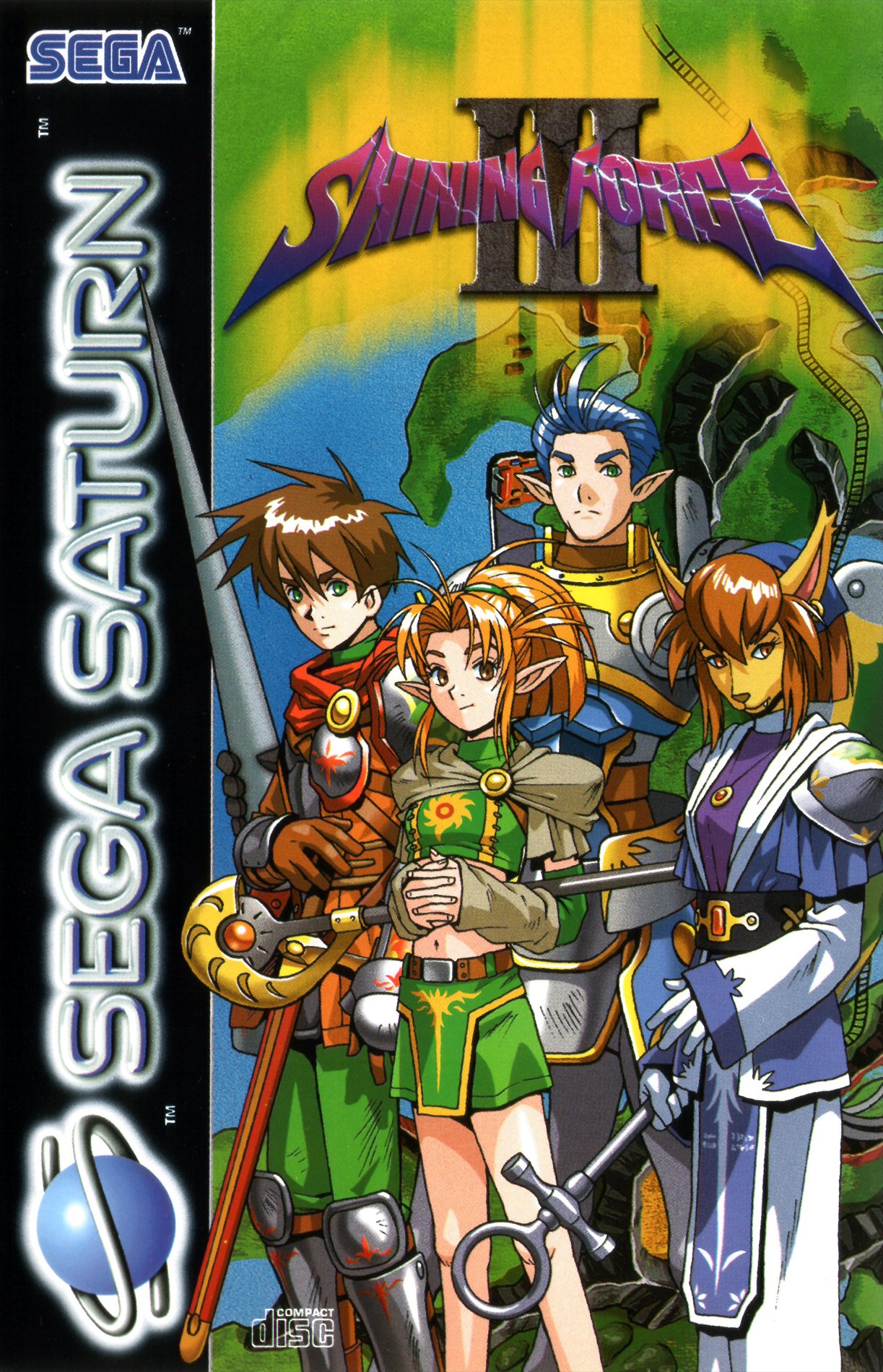
SHINING FORCE III
In the annals of video game history, "Shining Force III" for the Sega Saturn stands as a remarkable example of the fusion of art and interactive entertainment. Released in 1997, this tactical role-playing game not only captivated players with its deep strategy but also with its intricate storytelling and artistic expression.
"Shining Force III" was developed by Camelot Software Planning, with Hiroyuki Takahashi at the helm. Takahashi, who also worked on earlier titles in the Shining series, infused "Shining Force III" with a unique blend of narrative depth and strategic gameplay. The creation process involved building upon the legacy of its predecessors, aiming to create a more immersive and emotionally engaging experience. Inspired by classic fantasy tropes and Japanese role-playing game (JRPG) elements, the game set out to offer a rich, character-driven story set in a vibrant world.
The game is renowned for its challenging strategic battles. Players must navigate grid-based maps, positioning characters tactically to exploit enemy weaknesses while managing their own team's vulnerabilities. This level of strategic depth, combined with a story that unfolds based on player decisions, offers both a challenging and rewarding experience, appealing to strategy enthusiasts and RPG fans alike.
"Shining Force III" showcased the Sega Saturn's graphical capabilities with vibrant, detailed sprites and richly colored environments. The transition from 2D to 3D graphics in the series marked a significant step in visual presentation, offering more dynamic and engaging battle scenes. The character designs and animations brought the game's world to life, adding an artistic flair that enhanced the storytelling.
The soundtrack, composed by Motoi Sakuraba, is a highlight of the game. Sakuraba's compositions, known for their epic and emotive qualities, perfectly complemented the game's fantasy setting. The music set the tone for each scene, from the adrenaline-pumping battle themes to the more somber, narrative-driven pieces. Sound effects in battles and during dialogue further immersed players in the game’s world.
"Shining Force III" stood out for its ambitious design, notably its use of a branching narrative spread across three interconnected scenarios. This innovative approach to storytelling in video games allowed for a more expansive and in-depth exploration of the game's world and characters. Culturally, the game contributed to the popularity of tactical RPGs in the West, though its full impact was somewhat muted due to only the first scenario being officially localized in English.
An intriguing aspect of "Shining Force III" is that its full story is split across three scenarios, each following different characters and perspectives. However, only the first scenario was released outside Japan, leaving English-speaking players with just a fragment of the overarching narrative.
"Shining Force III" remains a testament to the potential of video games as a storytelling medium, blending strategic gameplay with a compelling narrative. It exemplifies how games can be more than just entertainment; they can be immersive, interactive art forms that engage players on multiple levels.

